Corporate office design trends in 2017 led us to greener, more sustainable office environments while accelerating the move toward healthier, more mobile-friendly, open workspaces. This was also the year that two office furniture trends combined, as the prevailing “authenticity-oriented” design aesthetic began to incorporate clearly identifiable residential design elements, resulting in a new crossover mix (dubbed “resimertial”) that introduces casual home comforts into formal office environments.
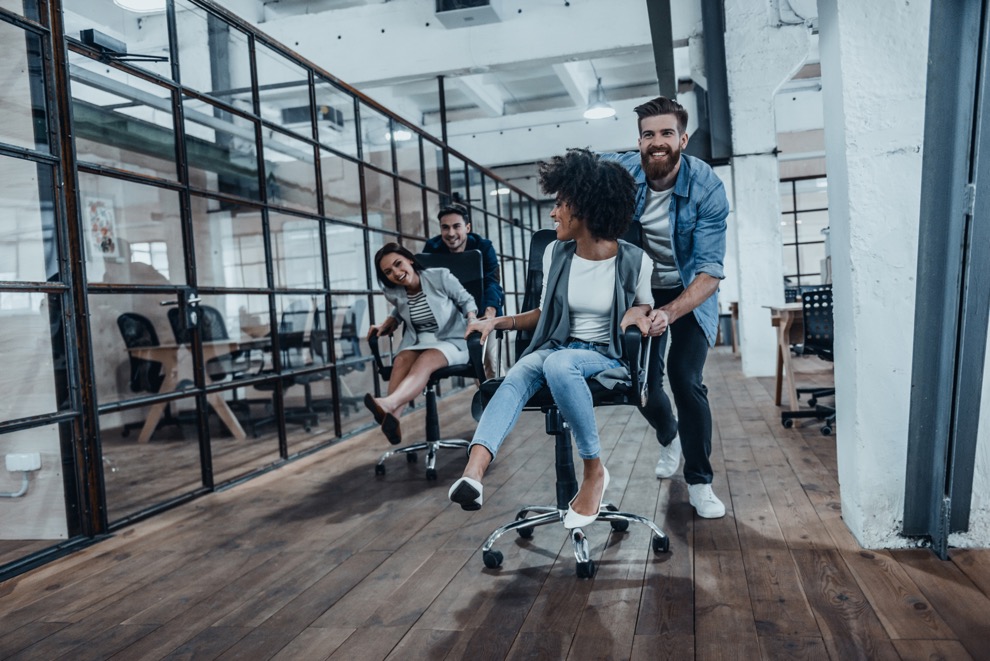
Are Your Office Designs Green, Sustainable, and now Biophilic?
The trend gurus at Pantone certainly had their finger on the pulse of the design community when they announced that “PANTONE 15-0343 Greenery” was color of the year in 2017.
Indeed, “Green Design” was at the heart of 2017 corporate office design trends, as engineers, designers, manufacturers, and suppliers stepped up their efforts to make the places we work more ecologically-friendly and sustainable.
In March, we took a look at the many ways renewable energy systems, building automation and earth-friendly interior design elements and furnishings are working together to make where we work more pleasant and green. Among the highlights:
- More and more new office buildings are using smart technologies, ranging from solar-assisted air-conditioners and heat pumps to green rooftop gardens in order to reduce energy consumption, with the most advanced facilities either requiring no net power from the grid (net zero) or returning excess energy back to the grid ( net positive).
- Office furniture trends in 2017 also saw an increased focus on promoting healthy conditions inside buildings, by specifying environmentally friendly furnishings, sealants, paints, and carpets that don’t produce dangerous indoor air pollution, as well as the use of safe, biodegradable cleaning and maintenance products once the building is occupied.
Designers in 2017 focused on our innate human desire to be around nature and natural elements while at work.
As a result, a new environmentally-oriented term entered the corporate office design trends lexicon in 2017: biophilic architecture and design. We took a deep dive into the biophilic design approach in July, with an article that explores how natural design elements in the workplace can help us become happier and more productive at work, by reducing our blood pressure for example or by improving our attentiveness on the job. Some of the wide range of ways we can bring the outdoors inside the office include:
- Building living green “plant walls” in lobby spaces that help improve the quality of indoor air while controlling ambient sound levels.
- Specifying authentic, natural materials for the office environment, such as Formaspace’s Weldmarx line of office desks, tables, and storage units, which are available with all natural hardwood work surfaces, made from solid walnut, maple, and more.
Open Floor Plans and Flexible, Ergonomic Furniture for a Changing Work Culture
In a working world that’s increasingly influenced by millennials, 2017 was the year that open, flexible, activity-based floor plans became the new normal in office design trends, leaving traditional closed office layouts and cubicle workspaces on the back-foot.
Lounge spaces, office cafeterias, and break rooms are once again seen as increasingly important elements for building a successful work culture. They provide a venue for those highly-desired “spontaneous interactions” between employees that can lead to innovations (while at the same time breaking down the tendency of departments into information “silos” than can bog down organizations.)
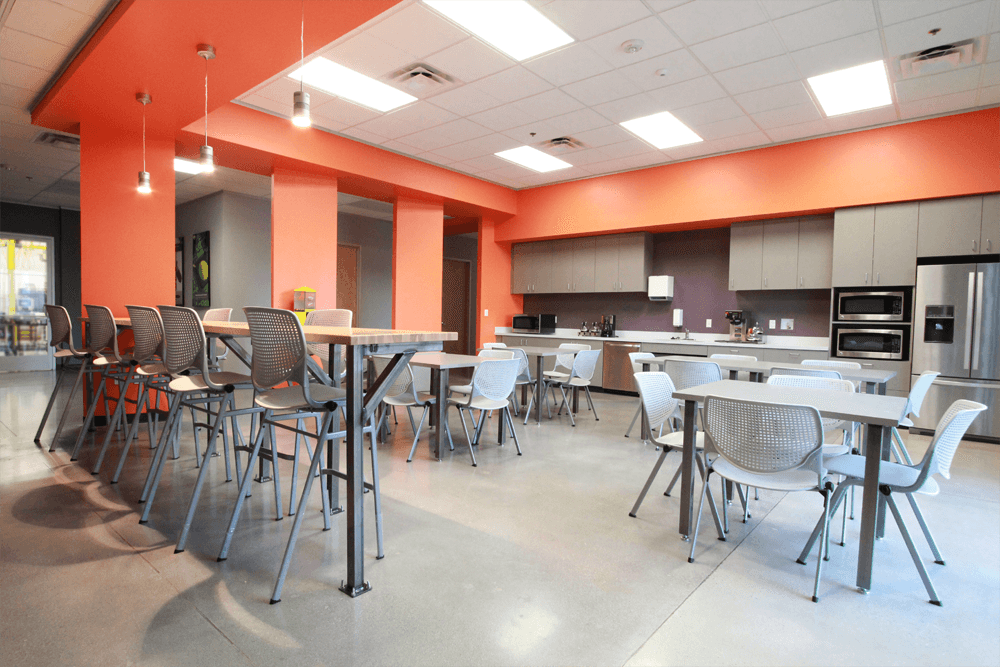
Don’t overlook ways to use conference rooms to their maximum benefit. With some clever furniture design, we can help you transform these large spaces into multi-purpose rooms that encourage team-building and more.
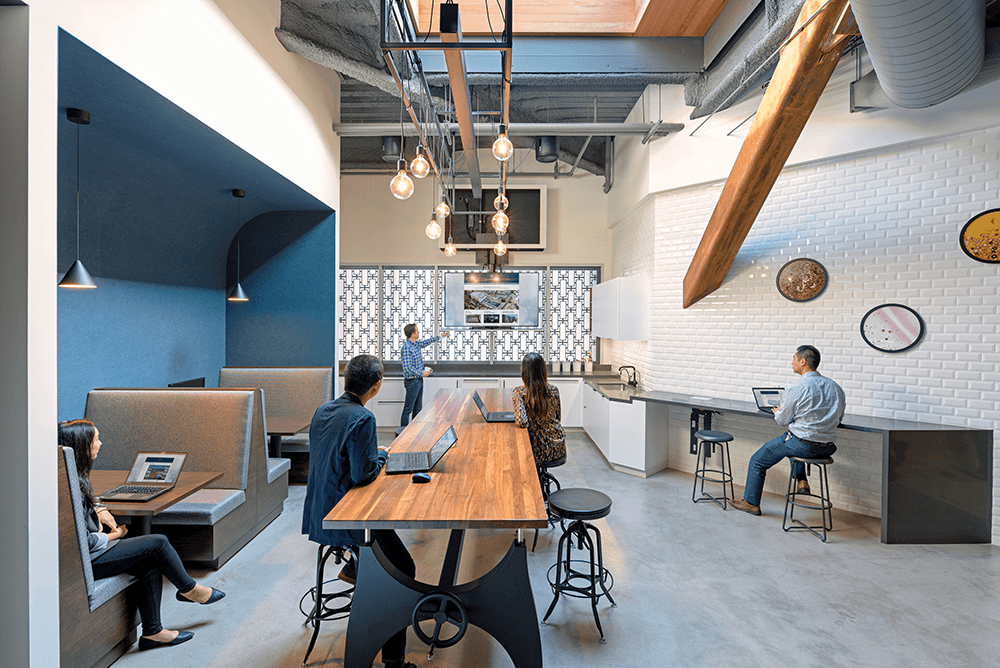
Also among the top office furniture trends in 2017 are flexible, ergonomic furniture solutions that promote health in the workplace, such as sit-to-stand desks. Sit-to-stand desks help keep everyone moving, by encouraging employees to change their seating position throughout the day in order to move muscles, relax strained eyes, and unwind brain activity in order to let fresh creative thoughts come in.
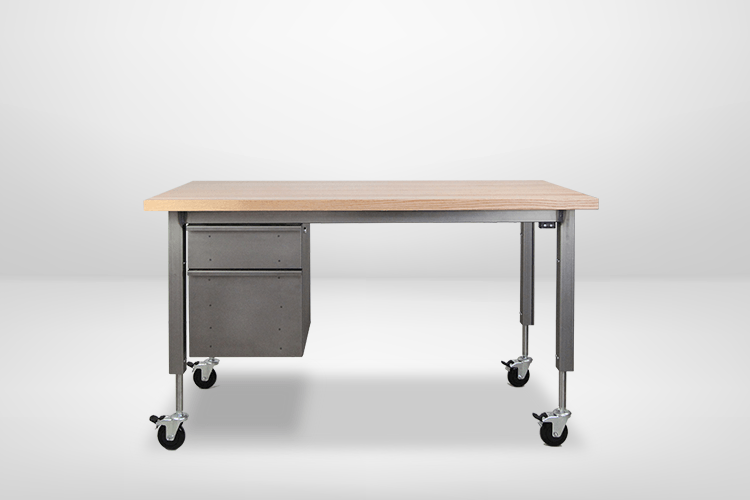
Finally, 2017 saw raised awareness of an important consequence of open, activity-based office design layouts — the need to provide dedicated quiet workplaces for those who need extra quiet in order to concentrate on work. Advanced building construction details as well as furnishings, wall-coverings, and carpeting that provide acoustic control are also part of the solutions.
Authenticity and Home Style Comforts Rule Office Design Trends
Authenticity has been one of the prevailing corporate office design trends for several years, as consumers seek out products and services that offer something “real,” e.g. credible, trustworthy, honest products and services that speak to a long-standing heritage and provenance.
That’s one of the reasons architects, designers and space planners specify Formaspace’s industrial look furniture for their office designs — our long history as a heritage furniture maker for factory and manufacturing facilities gives us a level of honest legitimacy that’s hard-won by making heavy-duty, quality, hand-made furniture that’s designed to last for years and years under the toughest conditions.
Material choices are another way to bring authentic design choices into the office environment. 2017 saw a resurgence in the choice of natural materials, especially solid hardwoods and natural concrete and cement.
Interestingly, in 2017 natural concrete and cement surfaces weren’t limited to industrial-look office floors, you could also find it in residential installations as well, where bare concrete and cement replaced granite or marble in kitchen countertops installations and bath/shower surrounds.
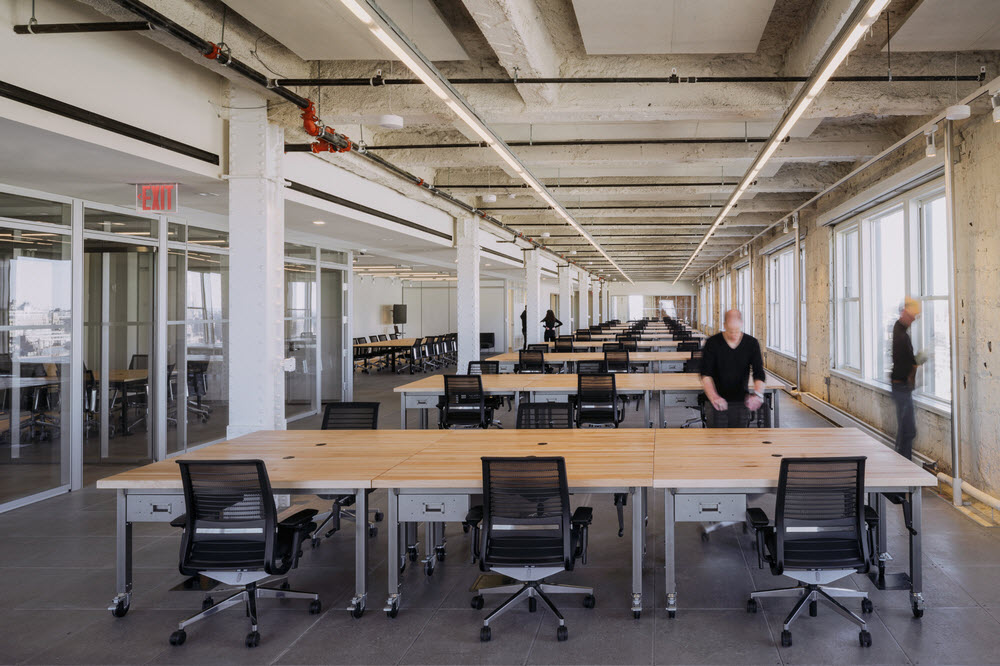
This is a perfect segue into our next item on the list of office design trends… the emergence of residential elements being incorporated into office design language in 2017.
Comfortable, home-inspired design elements, ranging from residential-style lighting to overstuffed sofas for “chillaxing” at work are now bringing a new level of comfort and casualness to the office environment. Check out our field spotter guide for offices that look and feel like home.
Which Corporate Office Design Trends Will Prevail in 2018?
The year 2018 starts with an auspicious color, as the color design experts at Pantone have declared that PANTONE 18-3838 Ultra Violet is the reigning color for 2018.

(As an aside, Pantone’s Ultra Violet reminds us more of British royalty than Andy Warhol’s former camp follower acolyte, so we hope this color will serve as a good omen for Harry and Meghan’s upcoming royal wedding at St. George’s Chapel this Spring.)
We can also make some more serious predictions about the furniture market in 2018.
During a discussion with Amanda Schneider last October, we talked about the rise of the ancillary furniture market. We predict this trend will continue apace in 2018 as designers, architects, and space planners choose to assemble “curated” collections of unique office furniture pieces at the expense of traditional systems furniture purchases. In our interview, Schneider also predicted that the furniture industry needs to take dramatic steps to “up their game” by making online purchasing simpler and more productive for buyers. We wholeheartedly agree. To that end, we kicked off 2018 by introducing our new 3DConfigure™ tool for our line of Formaspace Office furniture. It allows you to easily customize and view your furniture using advanced 3D technology so that you can see what your product will look like in use before placing the order.
2018 is also the year that we’ll begin to see significant numbers of the older members of Gen Z generation (born between 1994 and 2010) entering the workplace for the first time. This will further alter the balance of office demographics as more and more Baby Boomers retire each month. (In case you missed it, Millennials have been the largest generation in the US labor for since 2015, according to Pew Research.)
This younger generation of digital-native workers will be even more conversant in technology than previous generations and will help usher in significant changes to the way IT technology is used in offices. As a result, we predict 2018 will see increased adoption of “smart” furniture with built-in sensors and multi-function capabilities. (See our recent article for a primer). We also believe that advanced tablets (such as the iPad Pro from Apple and Windows Surface Pro from Microsoft) will continue to make inroads as wholesale replacements for desktop-based PCs. Larger monitor displays will also become more common, driving the need for sophisticated monitor arms that can sweep around to different viewing angles during impromptu collaborative meetings. as well.
Finally, we predict there will be more changes to office space planning as a result of increased data collection. Already many employers are using data collection sensors in furniture to assess whether spaces are being used efficiently, and they are using this collected information to make running changes to flexible office layouts in a sort of Darwinian “Use it or Lose it.” approach. As this type of activity-based space planning takes hold, there will be an advantage in specifying flexible furniture (such as modular Formaspace office furniture) that can be easily moved and reconfigured to serve new uses.
Other, more invasive types of data collection in the office have the potential to make news as well in 2018, but not in a good way. There may be a privacy backlash in the offing as office workers react against artificial-intelligence systems that actively measure and correlate job performance with individual behaviors. As the Wall Street Journal reports, these new systems can be pretty invasive, with detection capabilities ranging, such as:
- tracking where employees are physically located during each moment of the day
- reading employee email (to interpret the employee’s mood and intent)
- watching in real-time what employees are viewing on their computers
More advanced versions of the AI systems are expected to incorporate voice recognition and facial tracking systems to help identify “good” behaviors of the most productive employees, in order to develop algorithms designed to help recruit similar workers in the future. Armed with ever increasing slews of big data, these AI tools pose both a new opportunity and a challenge in 2018.
Mark Your Calendars Now For NeoCon 2018
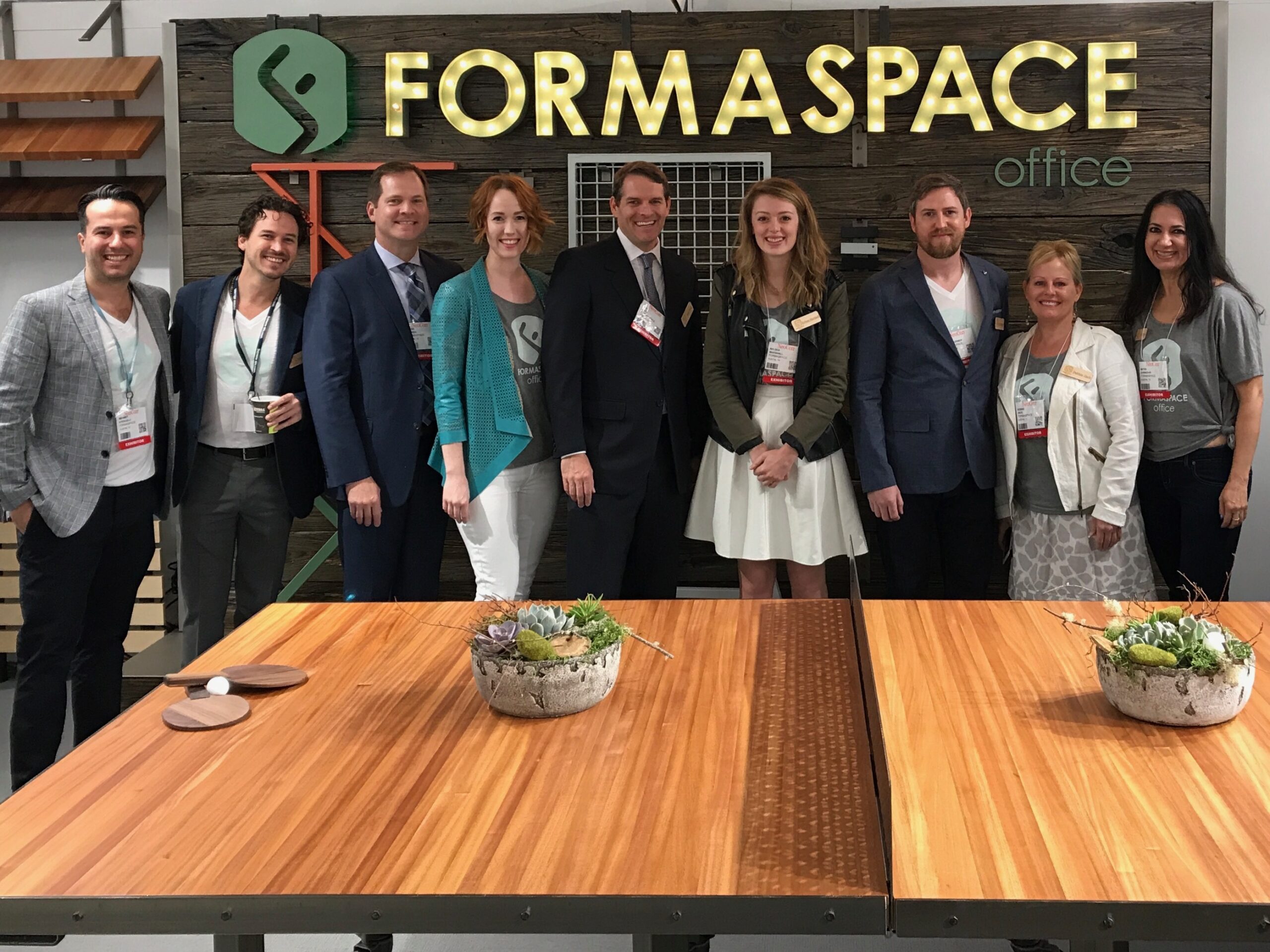
NeoCon 2018 is just around the corner. Mark your calendars now for June 11, 12 and 13 to attend the 49th edition of North America’s largest contract furniture exposition at the Merchandise Mart in Chicago. We’re already gearing up here at our factory headquarters in Austin, Texas — crafting the new products and bespoke designs we’ll be unveiling to the show. (So many in fact we’ve had to double our show space to make room for all the new displays.)
Our friendly Formaspace Design Consultants stand ready to help with their expertise to advise you on our full Formaspace Office product as well as our capabilities as custom manufacturers for your own unique furniture concepts.